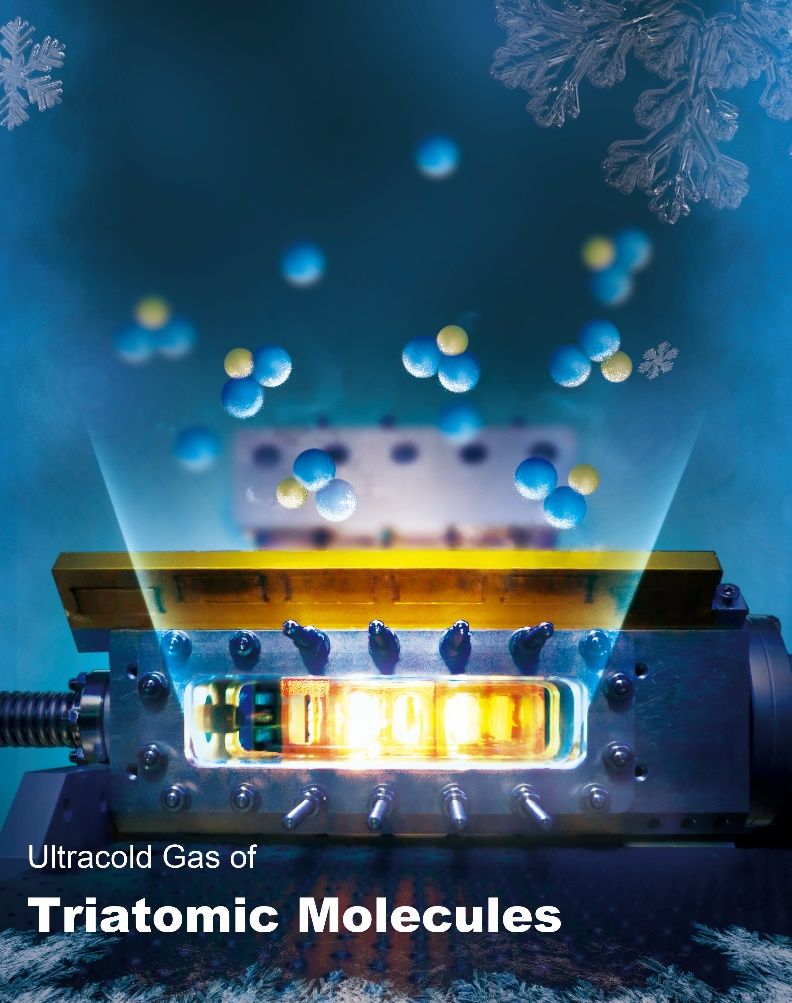Researchers Create Ultracold Triatomic Gas of High Phase-Space Density for the First Time
Recently, a research team led by Prof. PAN Jianwei and Prof. ZHAO Bo from the University of Science and Technology of China (USTC), used adiabatic magneto-association to create ultracold gas of triatomic molecules with high phase-space density from degenerate mixture of 23Na40K molecules and 40K atoms for the first time. This work was published in Science.
The use of highly controllable ultracold molecules in the simulation of complex chemical reactions allows for an accurate and comprehensive study of complex system. Thus, it has great application prospects in ultracold chemistry and material designs. Direct cooling of ultracold molecules is very challenging due to the complexity of the vibrational and rotational energy levels in molecules. Therefore, a novel method has been proposed for coherently converting ultracold atoms into ultracold molecules. Diatomic molecules, which benefit from high phase-space density and low temperature and can be coherently transferred to the ground state using laser, have been successfully created using the Feshbach resonance.
With the success in creating ultracold diatomic molecules, researchers have been discussing the possibility of using coherent conversion to produce ultracold triatomic molecules. In 2019, a team from USTC observed the Feshbach resonance between ultracold 23Na40K molecules and 40K atoms. Based on this research, the association of ultracold triatomic molecules in the mixtures of 23Na40K molecules and 40K atoms was accomplished using radio frequency pulses by a collaborative research group from USTC and the Institute of Chemistry, the Chinese Academy of Sciences (CAS). However, due to the short lifetime and low conversion efficiency of triatomic molecules, the team could only obtain evidence of association through the loss of diatomic molecules and atoms.

Creating ultracold gas of triatomic molecules through magneto-association. (Image by Prof. PAN Jianwei’s team.)
To directly detect triatomic molecules, Prof. Pan Jianwei and Prof. Zhao Bo’s team initially prepared a quantum degenerate mixture of 23Na40K ground-state molecules and 40K atoms. They successfully created ultracold triatomic molecular gas with high phase-space density for the first time by gradually increasing the magnetic field through a Feshbach resonance between 23Na40K molecules and 40K atoms, which allowed them to adiabatically transfer the scattering state of 23Na40K molecules and 40K atoms to the bound state of triatomic molecules. The team dissociated triatomic molecules into free molecules and atoms through radio frequency (RF) dissociation, and acquired the dissociation spectrum of triatomic molecules, consequently realizing the direct detection of triatomic molecules. The result showed that the phase-space density of the obtained triatomic gas is about 10 orders of magnitudes higher than that of triatomic molecules created by other methods.
This work was hailed by the reviewers as a milestone in the study of ultracold molecules. The creation of ultracold triatomic gases has laid the foundation for the simulation of three-body study in quantum physics, and the high phase-space density has also enabled the creation of Bose-Einstein condensates of triatomic molecules.
Paper link: www.science.org/doi/10.1126/science.ade6307
(Written by JIANG Zhimo, edited by ZHANG Yihang, USTC News Center)
Back
